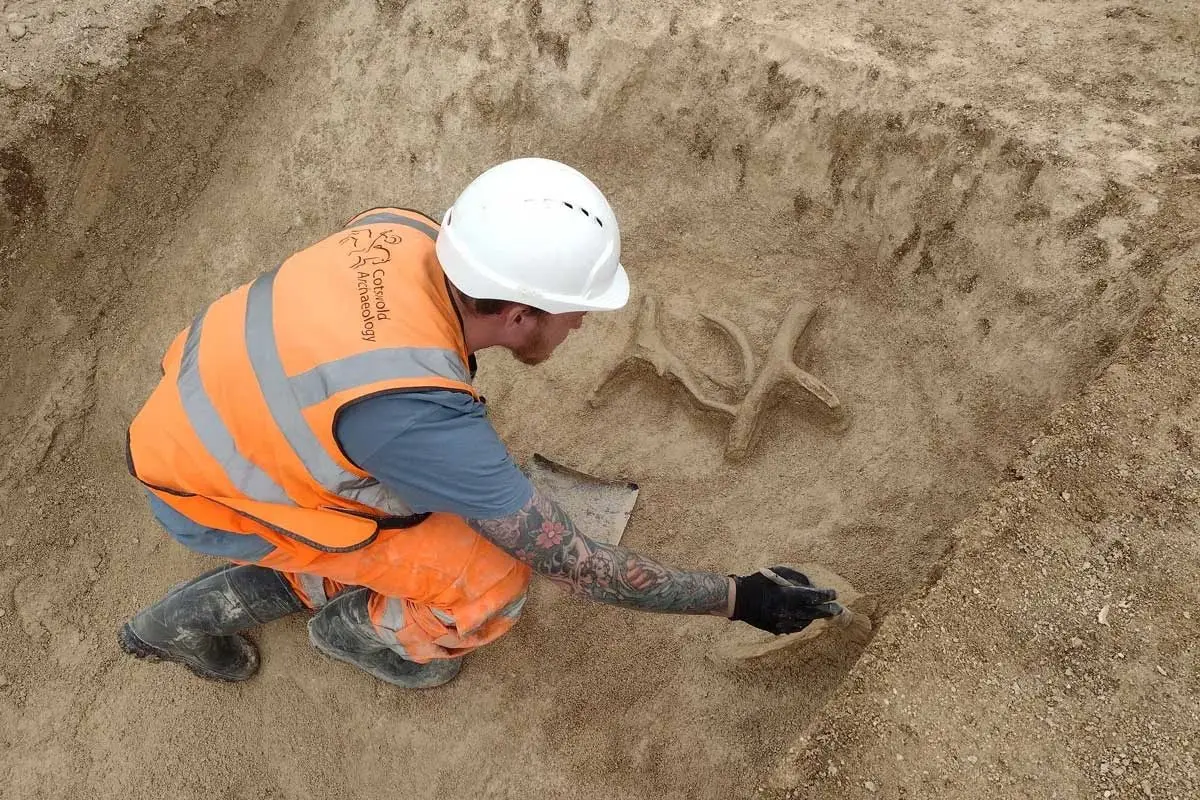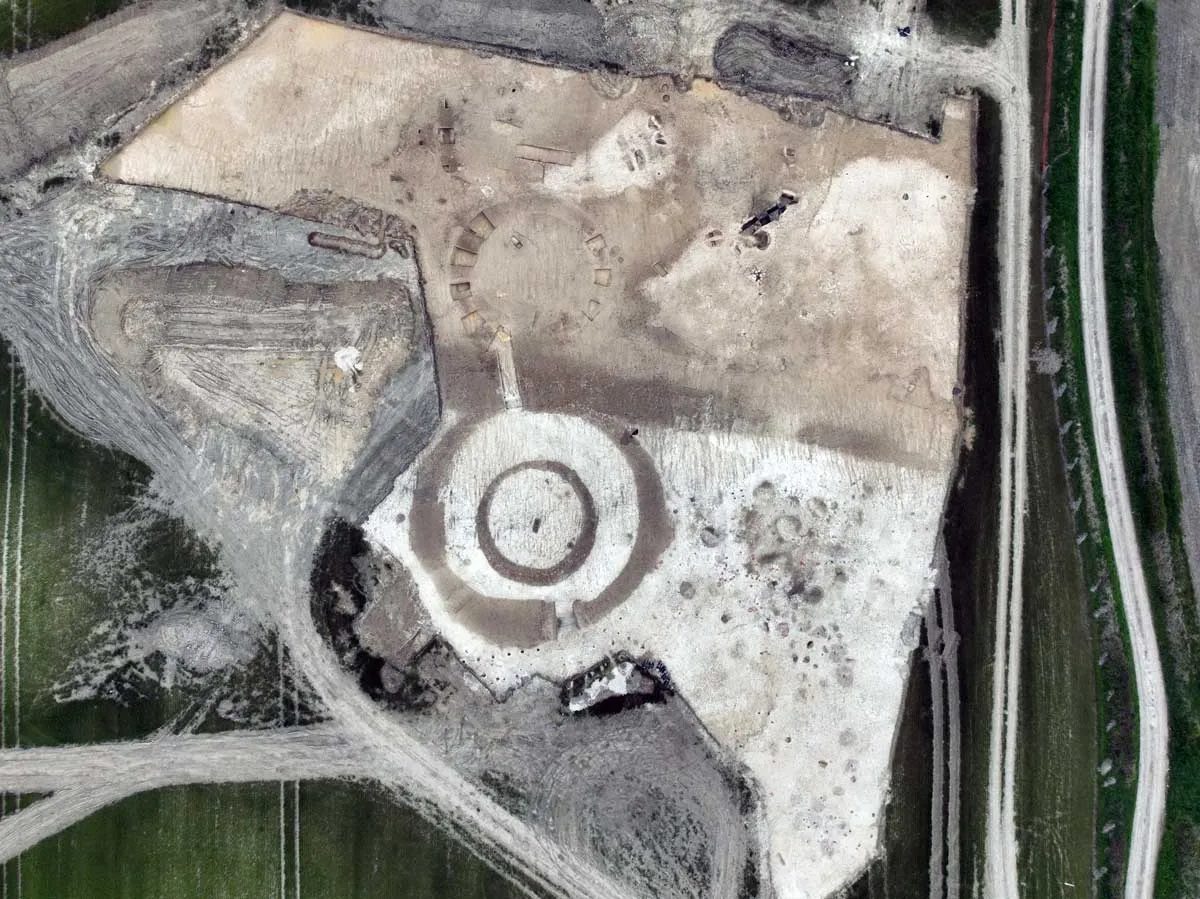Archaeologists from Cotswold archaeology have uncovered a giant Bronze Age barrow cemetery in the suburbs of Salisbury, England.
Excavations were in preparation for a housing development project, where the researchers found evidence of round barrows that have been levelled due to centuries of cultivation.
The construction of round barrows dates back to the Neolithic period, but the majority of them were built during the Beaker and Early Bronze Age (2400 – 1500 BC). These barrows typically comprise a central burial chamber, a mound, and a surrounding ditch.
The size of round barrows can range from under 10 metres in diameter to up to 50 metres, although the majority tend to average between 20 and 30 metre. Additionally, the earthworks associated with barrows can vary.
Some feature sizable central mounds, referred to as “bell barrows,” while others have smaller central mounds and outer banks, known as “disc barrows.” There are also those with central hollows, often referred to as “pond barrows.” Barrows tend to be associated with burials – some contain only single individuals, others a sequence of burials and occasionally multiple burials.

The cemetery near Salisbury consists of up to twenty or more barrows that spread along a valley floor up an adjacent hillside. The cemetery is arranged in small clusters of pairs or six, for which at least three are multi-phased barrows – two had been substantially enlarged and one had started out with a slightly oval ditch that was later replaced by a near-circular ditch.
The oval shaped barrow indicates that it could potentially be of Neolithic origin or constructed in an area associated with Neolithic activity. Positioned near the centre is a collective mass grave containing the skeletal remains of adults and children. The barrow revealed also contained two further graves, both of which held Beaker burials that were probably created at the start of the Bronze Age, as well as cut through Neolithic pits containing a cache of red deer antler used for making tools.
Excavations also found remains from the Saxon period, indicated by the discovery of a possible sunken-featured building, preserved timbers, iron knife blades and ceramics, as well as a cultivation terrace (‘lynchet’) of probable late Iron Age date and pits from the Bronze Age and Iron Age.
Header Image Credit : Cotswold Archaeology







